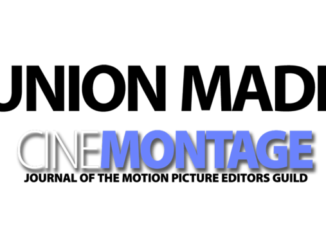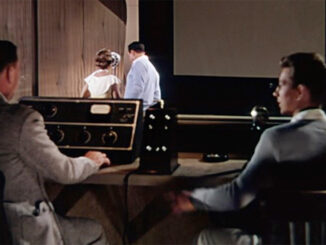
by Kevin Lewis
Director Ridley Scott’s award-winning film Black Hawk Down was based on a distinguished nonfiction book entitled Black Hawk Down: A Story of Modern War by Mark Bowden. The movie was a narrative interpretation of a tragic battle, replete with elisions, omissions, compressed incidents and a political bias — just like the landmarks of Western literature, The Iliad, El Cid and The Song of Roland. Fiction as history. We accept serious historical films as a variant of literature. Black Hawk Down should be discussed as a metaphor for all wars, not just as an interpretation of history, because it is one of the finest statements on what war does to its combatants, the destruction of all order, and the rise of murderous renegade tribes.
Black Hawk Down premiered 11 years ago in December 2001, just three months after 9/11. It could have been a box office disaster because it was about a United Nations peacekeeping action gone wrong in Somalia in 1993 during the Battle of Mogadishu. Famine, civil war and 300,000 civilian deaths provoked the UN intervention, which was decimated by the Somalia militia.
President Bill Clinton deployed the US Army Rangers, Delta Force and the 160th Special Operations Aviation Regiment (SOAR) to capture one of the culprits, Mohammed Farrah Aidid, who took over the country and declared himself president. The munitions warlord Osman Ali Atto, who supplied Aidid, was already captured by the Rangers and Delta Force. Ultimately, the mission became a political embarrassment to Clinton because a Black Hawk helicopter was shot down in the Mogadishu, and an American soldier taken prisoner. To retrieve the captive, several other soldiers were killed and the remaining ones had to escape through the town to the stadium, which was headquarters for the UN forces.
What is often overlooked about Black Hawk Down is the timeless quality of the story.
Some critics of the film viewed it as an endorsement of the war plans in Iraq of President George W. Bush. Though the film was finished and awaiting release before 9/11, director Scott was questioned at a pre-release screening of his film at the Directors Guild of America Theatre in New York that December about his opinions regarding that criticism. He replied that 9/11 happened because of pent-up frustration in the Middle East and did not elaborate or speculate.
In any event, the film was a critical and financial success and was nominated for several Oscars, including Best Director and Best Cinematography. It won Best Editing for Pietro Scalia, A.C.E., and Best Sound (Mixing) for the team of Mike Minkler, CAS, Myron Nettinga and Chris Munro. Scalia also won the Eddie Award from the American Cinema Editors (ACE), and the mixing team was awarded the CAS Award from the Cinema Audio Society (CAS). In addition, the British Academy of Film and Television Arts (BAFTA) honored the editor, the mixing team and supervising sound editors Per Hallberg, MPSE, and Karen M. Baker with the BAFTA Awards for Best Editing and Best Sound. Not to be outdone, the Motion Picture Sound Editors (MPSE) awarded two Golden Reel Awards for Best Sound Editing — Dialogue and ADR, and Effects and Foley — to Hallberg, Baker and their teams.
What is often overlooked about Black Hawk Down is the timeless quality of the story. The script by Ken Nolan, and its execution by Scott and Scalia, is a dramatized documentary, remarkable for its verisimilitude. Scott and producer Jerry Bruckheimer have made many gung-ho films that glorified the spectacle of war, but this opus revealed the cesspool created by war. The all-male cast of young Hollywood stars were trained by the Special Forces at Fort Benning and Fort Bragg. Their performances are stripped of any smirking or pretense and reveal the uncertainty and the dedication in what is known as the fog of war. In that situation, dependence upon one another is their only hope for survival. The isolation these soldiers experience is the real point of the story; the issues of the conflict are never discussed.
Perhaps the closest equivalent to Black Hawk Down in film history are the war films of director Lewis Milestone, especially All Quiet on the Western Front (1930), about World War I, and A Walk in the Sun (1945) about World War II. Milestone also stripped away any specific references to those wars and presented a rapidly dwindling group of soldiers killing and being killed for causes they no longer can comprehend in the outside world.
The average age of a soldier is usually 19 (presently, it’s around 23 because of the inclusion of the National Guard) and the majority of the actors in Black Hawk Down don’t look much older. Perhaps one of the most humane sequences in war films is the (literally) manual surgery of the artery of a critically wounded soldier. The young medic cannot find the retracted artery in the leg, and instructs the equally young soldiers around him to help him pull the artery out when he locates it. He tells the wounded, conscious soldier that he cannot use morphine on him because it would lower his heart rate. The editing of this sequence captures the documentary look of a real operation and is so precise in its execution that the full horror of the soldiers operating in the dark is shared by the audience. The final sequence of the remaining exhausted soldiers racing through the center of the market — literally running a gauntlet of bullets — to the stadium is unforgettable. The unrelenting dust under their feet, which rises to their lungs, is a metaphor for death and exhaustion, and was brilliantly captured by DP Slawomir Idziak.

Over 100 real people had to be compressed to 39 narrative characters for the film adaptation. Because of this large cast, continuity was a major narrative and editing obstacle. To some extent, Scott minimizes this confusion for the audience by printing time-lines and locations on the scenes. Characters drop out of the narrative as they are killed or captured, or when another storyline develops.
The working relationship between Scott and Scalia is so complex that, by their own admission, they operate as one mind. With the completion of the forthcoming The Counselor (2013), they will have completed nine films together in 16 years. Though the editing of Black Hawk Down appears arbitrary, with a nod to the Drew Associates’ style of documentary filmmaking, it is deceptively precise. Scalia hones in on small details — such as mangled flesh — then cuts to a soldier in the midst of disbelief and nausea. Everything appears to be in the moment and occurring live before the viewer.
Sound is also a very important element in the film because the gunfire is a character. In one scene, one soldier explains to another soldier how he can tell if he is being shot at: “If the bullet snaps, then it is far away. But if it hisses, that means it passed close.” The sound editing and mixing teams were justly rewarded for their complex soundscapes, as noted above.
Black Hawk Down may be the most enduring film directed by Scott — surpassing even his more famous Alien (1979) and Blade Runner (1982) — because of its tragic view of the human condition and the waste of the young by war. He shows why war abets future wars: Because the corruption we allow to mushroom in order to win a war emerges as the evil fungus that must be expunged by the next generation. That should serve as a lesson to our leaders about post-9/11 wars.





